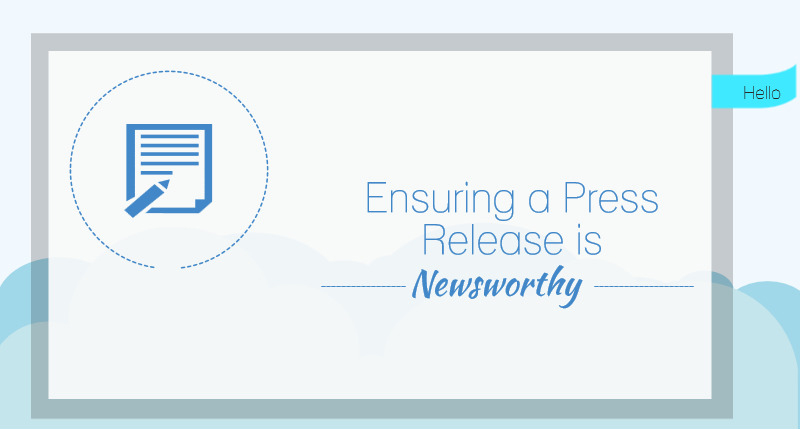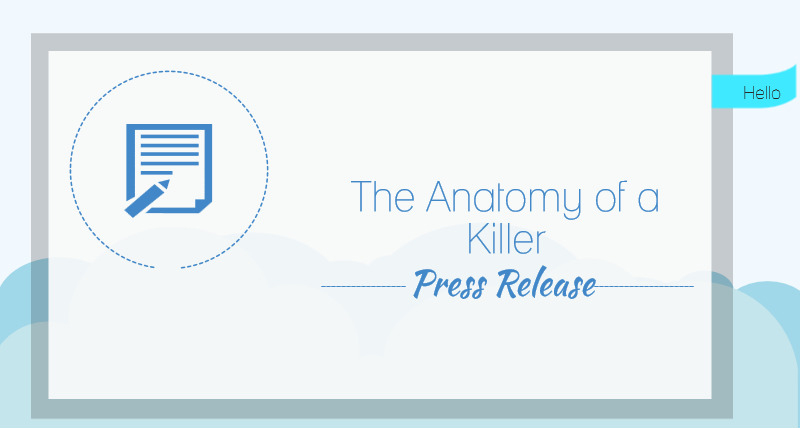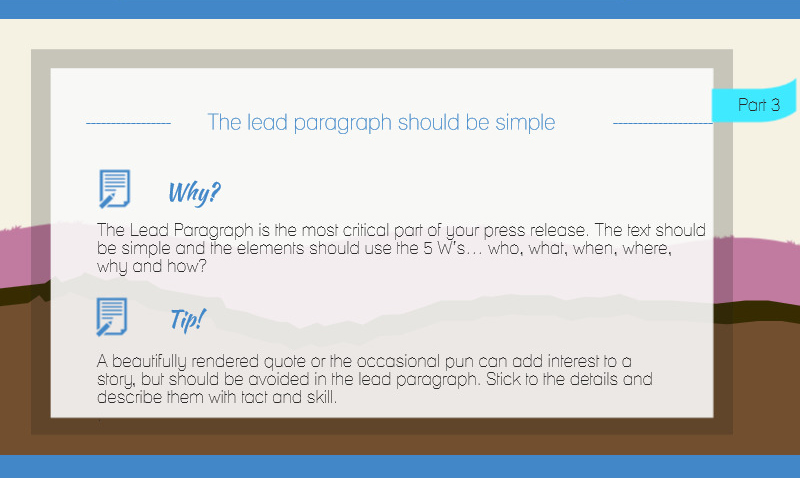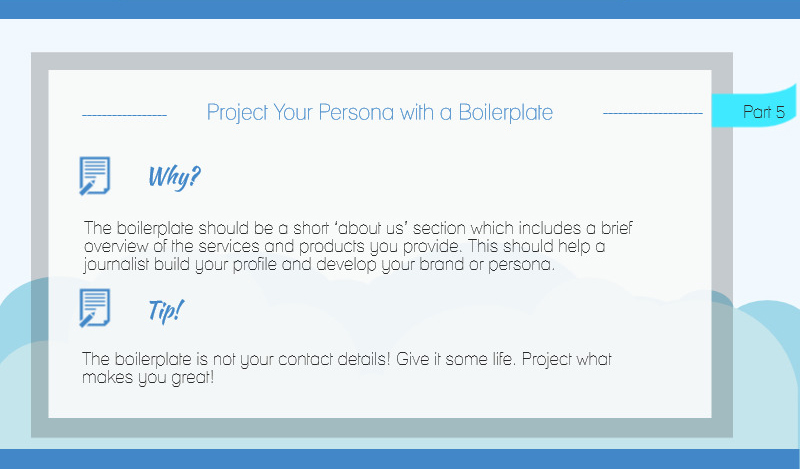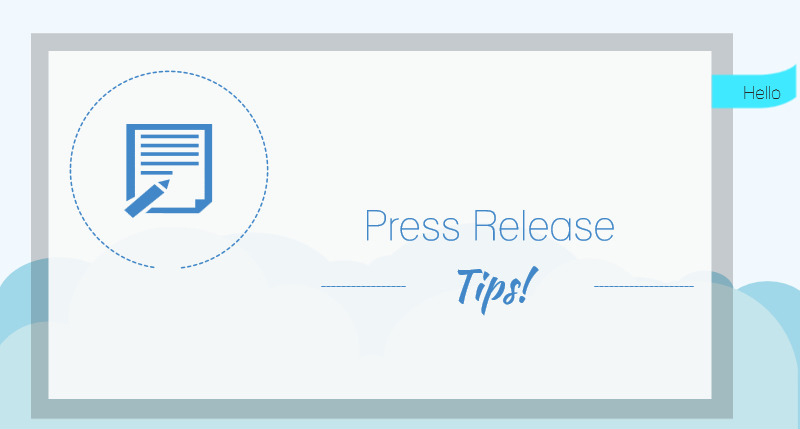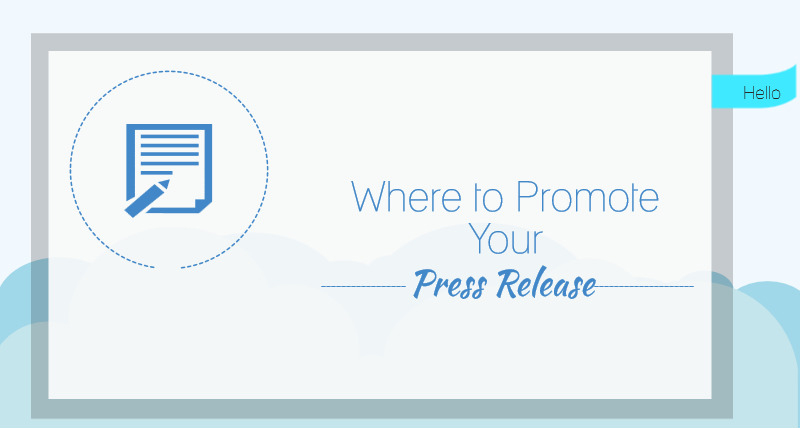Table of contents
- Ensuring a Press Release is Newsworthy
- The Anatomy of a Press Release
- Press Release Tips
- Where to Promote Your Press Release?
- Two Free Small Business Press Release Templates
So you’re starting a business. You have got the usual channels like Facebook, Twitter and a new website running and now you’re thinking about press coverage. For many small businesses the prospect of getting a little article in the local newspaper or getting a hot event on the radio is exciting. Not only can it provide you with a business boost, but it’s always nice to get a little coverage and have people talking about you!
But how do you get press? How do get on the radio? How do you find a journalist? These are questions that trip up many businesses and make the prospect of getting press coverage a little off-putting. Yet, journalists crave quality stories. Their jobs depend on it and if you have a story worth sharing, a press release to a journalist may be a way of getting your story out there.
Below we have listed the basic points you need to include in a press release, an infographic which you can save for later and even made a downloadable press release template.
Ensuring a Press Release is Newsworthy
Before you even contemplate writing a press release, the first thing you need to do is ensure you have a newsworthy story. For a small business, you’re probably looking at local newspapers, local radio and possibly even local TV stations. Each will have a higher definition of what is really ‘newsworthy,’ but if you’re taking the analytical approach to promoting a story, ensure it meets this 4 step criteria model for real press release success.
Timing
Is the story timely? As we can see by the success of social media sites like Twitter, people love receiving the latest up to date news. News that happened even as late as a week ago can often be too old, and it’s by these parameters that a story will often be judged by a journalist.
If you have a story to share, update a journalist in the quickest time frame possible.
Significance/Impact
How many people does your story affect? Will it bring a town to joyous celebration? Or is it only relevant to you and your customers? The more people the story will impact then the greater the significance to a journalist.
Perhaps develop an angle in which your story can appear to impact more people.
Proximity
As a local business you will no doubt be targeting local news outlets. Your story, although it may be newsworthy to the local press, would have a low value to the national press.
In the UK for example, a business based in the North West may find sending a press release to BBC News a waste of time, whereas sending a press release to BBC North West News may prove worthwhile.
Ensure to target appropriate news outlets with news that fits their proximity value.
Prominence
People love celebrity news. It takes up the columns in our newspapers and if the Queen rolls into your local town, expect it to flash across the front pages for weeks. Interest in news grows when you pair it with someone or something that is naturally prominent in your local community.
For small businesses, try to find something that is prominent in your local area. Whether you can invite a local celebrity to your charity bake sale or team up with Miss Leyland, making news prominent can lead to press release success.
The Anatomy of a Press Release
The first stage of getting a press release worthy of a journalist’s attention is to learn the anatomy. We live in a world of new information and for a journalist; they have to report this news as quickly as possible. This means they have little time to figure out whether a story is worth reporting. For a small business sending a press release without the detailed structure is a huge no no.
Follow this basic format for press release success.
Each press release should start with a headline. You’ll obviously want to get creative and create something that grabs a reader’s attention. The stronger a headline the more likely a reader is to carry on reading the press release. You should also try to maintain the length of a press release headline. Research has shown that headlines between 80 to 100 characters are the optimal length. Remember, a journalist will be receiving hundreds of emails every week, if you want your press release to make an impact it has to be catchy.
Imagine for a second we were promoting this blog post in a press release. What would the title be? Would Guide to Writing Press Releases by 123Print suffice or peak an interest? Probably not.
Try:
123Print Launches the Ultimate Guide to Writing Press Releases Boosting Small Businesses
A journalist who is truly worthy of your story will easily receive hundreds of press releases each week. Grab the reader’s attention with a strong, catchy headline utilising keywords that spark people to read on.
Format Tip: Ensure the headline is formatted in bold text.
So you’ve mastered the headline. You have thought of something catchy and started to reel the reader in. The next stage is developing a full story. As has been stressed before, a journalist has only a limited amount of time and each second is valuable. Thus, it’s important they know the full story from the get go. With a summary, a journalist can get the full picture and identify what makes your story unique and worthwhile to their reader.
A summary should complete three roles:
It should get to the heart of your story.
It should clearly identify unique features.
It should tell the whole story.
Try:
New Guide Shows Small Businesses How to Write a Clear and Structured Press Release Aimed at Eliminating Frustration of Lack of Press Coverage.
Obviously this blog post would be a hard thing to sell to a journalist. It’s not really ‘newsworthy’ but you can see the techniques in the summary above. It is short (almost a title), it gets to the heart of the story ‘helping small businesses’, tells the whole story and adds unique features ‘eliminating frustration’.
Format Tip: Ensure the headline is formatted in italicised text.
Dateline and Lead Paragraph
After the summary you need to lead the reader into the story. The Lead Paragraph is the first paragraph in your body and is possibly the most critical part of your press release. You should aim to keep the text quite simple and stick to the facts of the story, trying to address each of the 5 W’s. Address Who the story is about? What are you talking about? When did this happen? Where did this take place? And Why has this happened?
Addressing each of these in your lead paragraph will help the journalist build a clear picture of your story and make it easier to digest information developed further in your body.
Try:
LEYLAND, JUNE. 4, 2014 – 123Print UK (Who is this story about?) today announced (When did this happen?) they have launched their latest guide to help Small Businesses (why have we done this?). Covering the whole spectrum of Press Releases (what are you talking about?) the latest guide has detailed breakdowns of how to write a press release and is aimed at eliminating frustration at a lack of press coverage (Why have we done this?).
Body
The body text of your press release is where you can really start to get creative. Your aim is to help design a perspective for the story and you should include statistics, quotes or testimonials that help support the story. Talk about the target audience and how they can benefit from what you have done and support this with quotes.
Try:
“The ultimate press guide is a game changer for small businesses” said Dan Stainthorp, Head of Small Business Development for 123Print’s, Business Community Unit. “It solves the No. 1 Journalist to Business Problem – lack of communication. Businesses need press coverage and journalists need stories – this guide connects the two, making it easier to develop stories and build local business within communities.
The Ultimate Press Release Guide features a detailed breakdown of each stage of the development for a press release, while also identifying many of the ways Small Businesses can contact journalists. The unique guide was designed to be taken away by businesses to be used over and over again, utilising press release templates, must know tips and writers guides. The guide is available on the 123Print Blog from June 4th.
The Ultimate Press Release Guide joins the 123Print Small Business Guide range and further expands its variety from past guides on Facebook, Twitter and Google Plus.
Following on from the body of your press release you will want to add a small boilerplate to round it off. The boilerplate should be a short ‘about us’ section which includes a brief overview of the services and products you provide. With this, you should try to make the boilerplate reflect your brand and possibly include your mission or vision statement to help the journalist fill out a story.
Try:
Since 1906, 123Print has been committed to providing customised printing services for the business world. Today, with an online ecommerce store, the company is the premier online printer and provider of professional printing. From early 2013, the team of small business enthusiasts based in Leyland, have been creating content that can help boost the marketing efforts of their customers. Truly committed to ‘Helping You, Be You’ head over to 123Print.co.uk for Business Inspiration, Advice and Tips.
At the end of your press release you need to include up to date and correct contact information. You may have a great story; it may meet all of the 4 criteria for a newsworthy story but what happens if you have put in a wrong contact number or an email address with a typo? Nothing happens. The story is gone before it even started.
Contact:
Dan Stainthorp
dstainthorp@123print.co.uk
93 Print Street,
Leyland,
Lancashire
Ph: 01534 818092
Press Release Tips
Poor grammar and typos can be particularly offensive to a journalist. They are the literacy elite in your community and mistakes like confusing their, there and they’re can turn a hot story into a big flop. A good tip is to print the press release out and grammar check in hand form before finalising to send out.
It is tempting when trying to sell a press release to add a little fiction to the story. But the truth is, there’s nothing worse than wasting a journalist’s time and, outright fiction for the sake of press coverage should be avoided at all cost. Try to stick to the Who, What, Where, When and Why of the story and keep language professional but engaging.
A Beautifully fictitious quote from a relevant Spokesperson can go a long way
For many journalists, the quotes in a press release are the heart of the story. They help define the perspective a story should be told from and, when used correctly, can help make the story appear more newsworthy.
Obviously as noted above, your press release should reflect a story of fact and the quote is a chance to turn a run of the mill story into a colourful prominent piece. Get creative. Use a quote from a prominent spokesperson, but always ensure you ask the ‘source’ if you can attribute the quote first.
Like a CV, no more than 1 page
To give you an idea of how a journalist views a press release, the best example would be to imagine opening a new batch of applicant CV’s. Imagine that feeling of dread when you find a CV more than 1 page long. Even worse is when it contains lots of tiny typos and grammatical errors. Straight in the bin.
Take the CV approach to a press release. Find the journalist you are targeting through Twitter. See what peaks their interest, read their stories and define their angles of reporting. This will help you, just as you would in a CV, define a story that appeals directly to them.
A CV is bait to get an interview; a Press release is bait to get a TV interview.
Following on from the above tip, one of the worst mistakes you can make when promoting a press release is blind copying every journalist within a 50 mile radius. Go out and find out what makes certain journalists tick. If you’re campaigning for better parking facilities for your customers, why not research journalists who have reported on these stories before?
If you’re holding a local charity event, why not find out the direct writer for a culture and events page? It’s better than plainly targeting the newspaper press release line!
There’s so many ways each business can make a personal touch with journalists and build relationships.
It’s not about you, it’s about the reader
Unless you’re launching the new Xbox and offering free Xbox’s to journalists, if your press release is just a thinly veiled promotion, you’re not going to get any news time. Drop the promotional stuff, yes the story may be about you but it needs to show a benefit to the reader. In the above press release breakdown, we talked about how our new guide could benefit both journalists and small businesses; this shows a benefit to the reader and creates an angle for the journalist to work with.
Round it back to a Current Event
Tying your news into a current event set in your area is an effective way to make your news more appealing. A journalist may be writing a series on events such as a local carnival and may find your press release can really fill out the series. You can also look at national news and write a press release about the effects to your business.
A Press Release is Just the Start
It’s worth keeping in mind that a press release is just the start of a great campaign. Particularly if you’re starting a new business, where you may be short on time, remember to set aside some time for interviews etc. If you can’t meet the basic time frames required by a journalist to write your story it may be best to avoid contact all together. If you want to build a relationship with certain news outlets it is best not to waste their time or give the impression that you don’t have time to spare.
Where to Promote Your Press Release?
Throughout this guide we have talked about tactics which are specific to small businesses. This usually means you will be targeting local newspapers and radio stations.
Start by aligning your press release with a particular section of a newspaper. If your story is about a local event you are holding, create a list of every journalist who has written about local events. Usually, they’ll have a website with their online profile where you can take down their direct email address. Perhaps even pick up the phone and ASK them if you can drop them an email. Although, journalists are usually quite busy, so a phone call may be one step too far.
Target Local Online Bloggers
The great thing about 2014 is that the online world and the local world are really not that far apart. Whereas once only national businesses could see the benefits of targeting online bloggers, more small businesses are now turning to local bloggers for local promotion.
In metropolitan areas, these blogs can pick up quite a lot views and are often highly underrated when it comes to promoting activities in local areas.
Do a little research, maybe you could offer the blogger a free ticket to your event or a free meal at your restaurant for writing about your press release?
Share on Social Media
For me, there are 3 main social media platforms you should be sharing your press releases on. With these, you can target them in three different ways.
Google Plus
With the rise of Google Authorship and the importance it places on appearing in Google Search results, more journalists are turning to Google Plus as a main social media profile. For the general public, the take up is still quite low but for journalists and writers Google Plus has massive benefits.
With such low competition, why not share your Press Releases with targeted journalists through Google Plus?
With unlimited character usage in posts and the ability to tag in private targeted users, sharing a press release with a friendly touch is simple.
Facebook
With over 1 Billion users it’s fair to say a few of them may be journalists. If your story really is newsworthy, then it may get shared, it may get talked about and eventually may lead into a journalist’s newsfeed.
Make sure to share the press release with a link to a page where people can find out more information. This page could be in the form of blog post or just a simple contact page.
Twitter
The great thing about Twitter is the openness of it as a platform. If you are targeting local journalists it may be worth noting down their Twitter tag. Each journalist will have Twitter accounts to share their own stories with readers and it also gives them a chance to gain insight into stories.
With such an open platform it would be a shame for you to not share your press release with them on Twitter. If you have a blog, why not post your press release online and then share the link with specific journalists?
A pro tip may be to use Twitter as a follow up. Send the journalist a press release via email first and then in a couple of days, send a link via Twitter.
Two Free Small Business Press Release Templates
To give you a head start and take a step in front of the competition, download our two free press release templates below. You can then edit each of templates to fit your story.
http://bit.ly/123PrintSamplePressRelease
http://bit.ly/DianesSteakHouseSamplePressRelease

